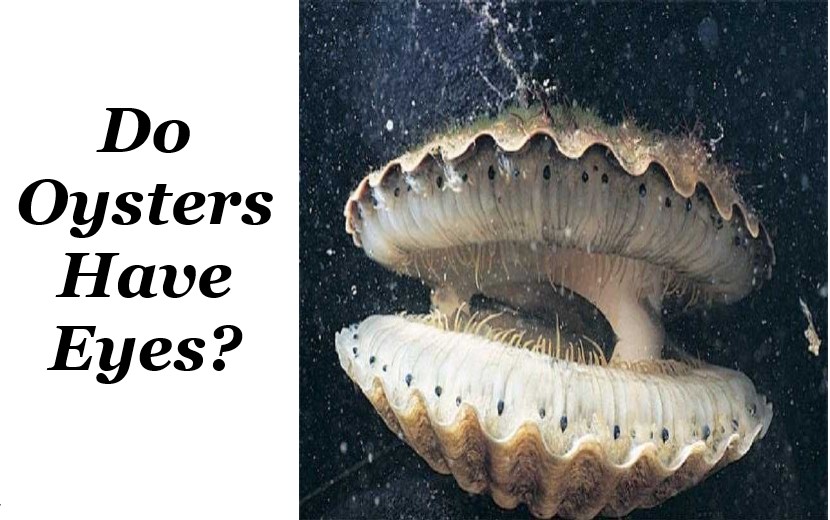The underwater world is filled with enigmatic creatures, and oysters, with their elusive nature, often spark curiosity. One common question that arises is, “Do oysters have eyes?” In this exploration, we’ll delve into the intriguing world of oysters, addressing questions about their sensory capabilities, reproduction, and more.
The Eye Debate: Oysters and Vision
The question of whether oysters have eyes may seem straightforward, but the reality is a bit more nuanced. While oysters don’t have eyes in the conventional sense, they possess light-sensitive cells that allow them to perceive changes in their environment. This unique adaptation helps them thrive in their underwater habitats.
Subheading 2: “Oyster Anatomy: Heart or Hearsay?
Contrary to popular belief, oysters don’t have a traditional heart like mammals. Instead, they rely on a three-chambered heart to circulate blood-like fluid throughout their bodies. This efficient system serves the oyster well, contributing to its ability to filter water and extract nutrients.
Eavesdropping on Oysters: Can They Hear?
The idea of oysters having the ability to hear may sound whimsical, but it holds some truth. Oysters can detect vibrations and changes in water pressure, allowing them to respond to potential threats. While it’s not a form of hearing as we know it, this sensory adaptation plays a crucial role in their survival.
Birth of an Oyster: From Spat to Shell
Understanding how oysters are born adds another layer to their mystique. Oysters start as microscopic larvae called “spat,” floating freely in the water. As they mature, they undergo a fascinating transformation, eventually settling and developing into the shelled creatures we recognize.
Gender Benders: Oyster Reproduction
The question of whether oysters are male or female doesn’t have a simple answer. Oysters are known as protandrous hermaphrodites, meaning they start as males and can transition to females. This unique reproductive strategy enhances their chances of successful mating in the complex underwater ecosystem.

The Mystery Unveiled: Do Oysters Have Eyes?
Navigating the realm of marine life prompts intriguing questions, and one that often surfaces is, “Do oysters have eyes?” This query leads us into the nuanced world of oyster biology, where light-sensitive cells take center stage. While lacking traditional eyes, oysters exhibit a fascinating adaptation that allows them to sense changes in their surroundings, showcasing the brilliance of nature’s design.
Eyes or Adaptation? Understanding Oyster Sensory Perception
The debate on whether oysters have eyes extends beyond semantics. These creatures, without recognizable eyes, employ a sophisticated system of light-sensitive cells to perceive their environment. This adaptation highlights the intricate ways in which oysters navigate their watery habitats, demonstrating that the absence of conventional eyes does not diminish their ability to thrive.
Demystifying the Oyster’s Visual World: Can Oysters See?
Delving deeper into the question, “Do oysters have eyes?” prompts an exploration of their visual capabilities. While they don’t possess vision as humans understand it, oysters can detect changes in light and shadow. This unique form of visual perception contributes to their survival strategies, allowing them to respond to both predators and environmental cues.
Beyond Eyes: Oyster Survival Instincts Revealed
The inquiry into whether oysters have eyes opens a gateway to understanding their survival instincts. Oysters, with their sensory adaptations, showcase an evolutionary marvel that goes beyond conventional visual perception. Their ability to detect subtle changes in their surroundings enables them to thrive in the dynamic and often challenging underwater ecosystems they call home.
Oyster Insights: How Their ‘Eyes’ Shape Their Behavior
Examining the question, “Do oysters have eyes?” invites us to explore the behavioral aspects influenced by their unique sensory adaptations. The presence of light-sensitive cells not only aids in detecting potential threats but also plays a crucial role in the oyster’s filter-feeding behavior. This intricate connection between sensory perception and behavior unveils the seamless integration of form and function in the oyster’s world.
Oyster Optics: The Evolutionary Advantage of ‘Eyes’
As we ponder whether oysters have eyes, we uncover the evolutionary advantage embedded in their optical adaptations. The absence of traditional eyes doesn’t hinder their ability to thrive; instead, it showcases nature’s efficiency in crafting solutions that suit the specific needs of each species. The oyster’s ‘eyes,’ though different from our own, stand as a testament to the diverse ways life adapts to its environment.
FAQs:
Do oysters have eyes or ears? A: Oysters don’t have eyes in the traditional sense, but they possess light-sensitive cells to perceive changes in their environment. They also can detect vibrations, though it’s not a conventional form of hearing.
Do oysters have a heart? A: Oysters have a three-chambered heart that circulates blood-like fluid throughout their bodies, contributing to their efficient filtration and nutrient extraction processes.
Can oysters hear? A: While not in the way humans hear, oysters can detect vibrations and changes in water pressure, allowing them to respond to potential threats.
How are oysters born? A: Oysters start as microscopic larvae called “spat,” floating freely in the water. They undergo a fascinating transformation, eventually settling and developing into shelled creatures.
Are oysters male or female? A: Oysters are protandrous hermaphrodites, starting as males and transitioning to females. This unique reproductive strategy enhances their chances of successful mating in the underwater ecosystem.




